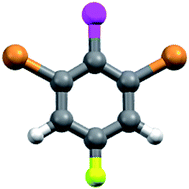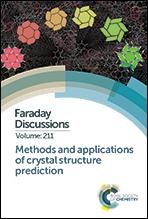Evolutionary niching in the GAtor genetic algorithm for molecular crystal structure prediction†
Abstract
The goal of molecular crystal structure prediction (CSP) is to find all the plausible polymorphs for a given molecule. This requires performing global optimization over a high-dimensional search space. Genetic algorithms (GAs) perform global optimization by starting from an initial population of structures and generating new candidate structures by breeding the fittest structures in the population. Typically, the fitness function is based on relative lattice energies, such that structures with lower energies have a higher probability of being selected for mating. GAs may be adapted to perform multi-modal optimization by using evolutionary niching methods that support the formation of several stable subpopulations and suppress the over-sampling of densely populated regions. Evolutionary niching is implemented in the GAtor molecular crystal structure prediction code by using techniques from machine learning to dynamically cluster the population into niches of structural similarity. A cluster-based fitness function is constructed such that structures in less populated clusters have a higher probability of being selected for breeding. Here, the effects of evolutionary niching are investigated for the crystal structure prediction of 1,3-dibromo-2-chloro-5-fluorobenzene. Using the cluster-based fitness function increases the success rate of generating the experimental structure and additional low-energy structures with similar packing motifs.

- This article is part of the themed collection: Methods and applications of crystal structure prediction


 Please wait while we load your content...
Please wait while we load your content...
